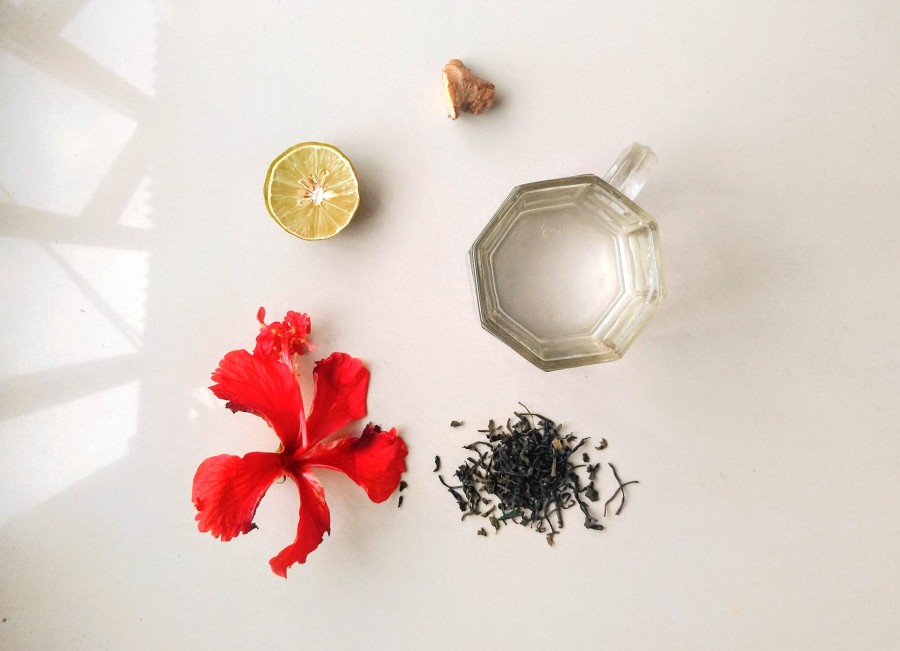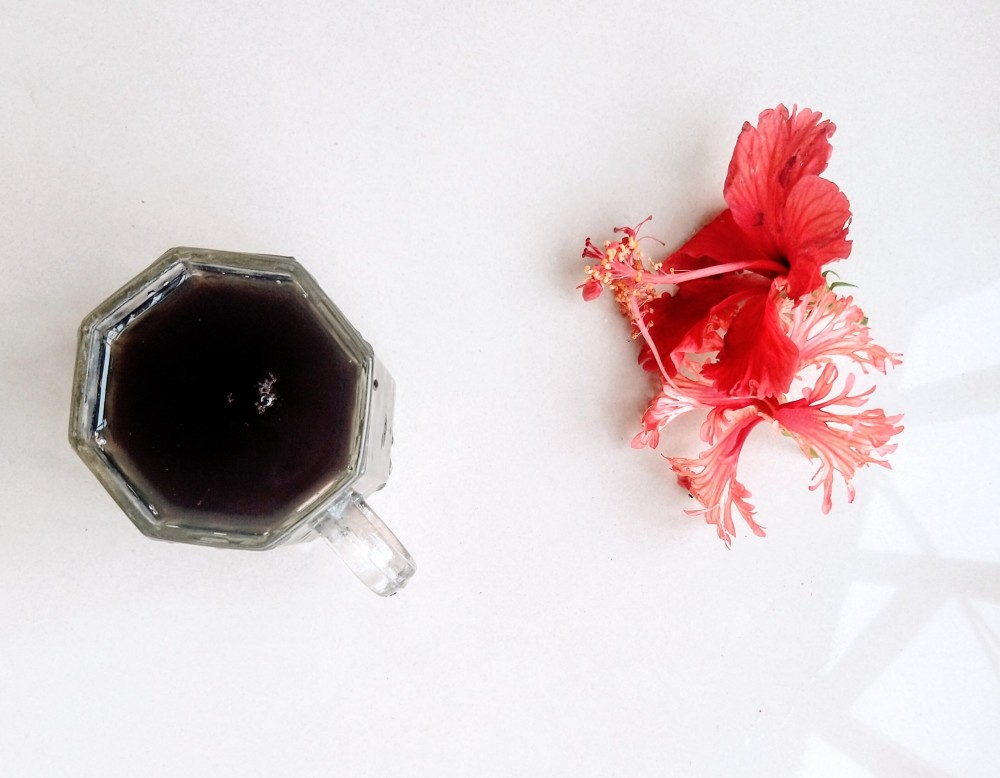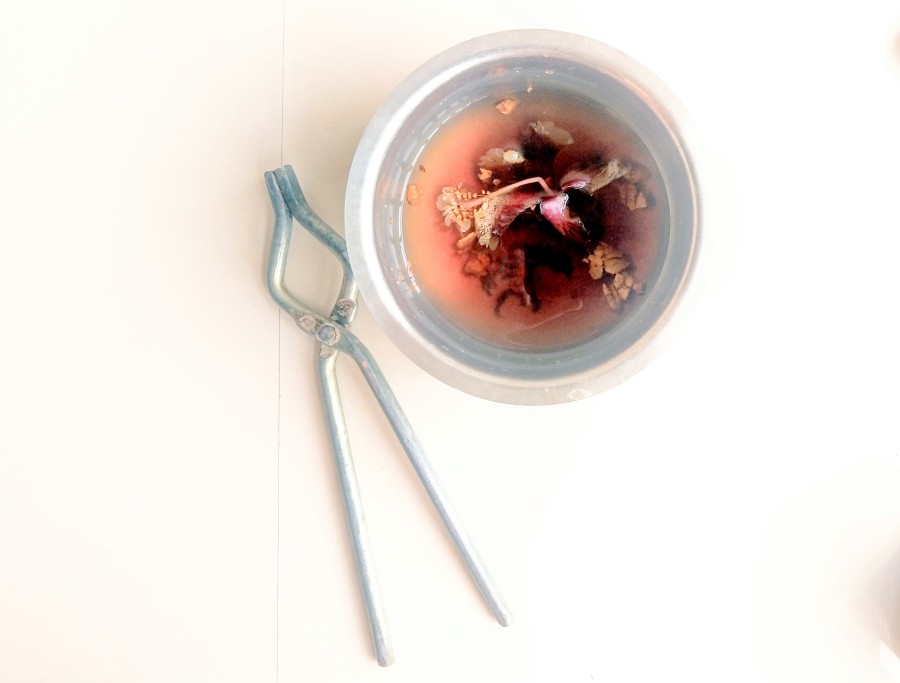When winter arrives and time flies by, my partner and I find ourselves craving something warm and restorative.
Water alone doesn’t satisfy, and a fifth cup of coffee can leave us jittery. We turn to hibiscus flower tea, our go‑to caffeine‑free brew that’s as beautiful as it is beneficial.
It’s easy to make, packed with antioxidants, and can give you a gentle energizing effect.
So let me walk you through this DIY hibiscus flower tea recipe, explain how it works, and why we love it in the house.
Table of Contents
Ingredients You’ll Need
You’ll need a few kitchen staples to make this tea. Quality ingredients give you better taste and health benefits, so whenever possible, use organic hibiscus petals and fresh ginger.
For two cups of tea, you’ll need:
- Hibiscus flowers: 1–2 fresh blossoms or 1.5 tablespoons dried
- Green tea leaves: 1 tablespoon
- Ginger: 1 tablespoon grated
- Lime juice: 1 tablespoon
- Filtered water
- A drizzle of honey (optional for sweetness)
Optional ingredients
- Cinnamon sticks or star anise add a spicy kick
- A few rose petals for a floral note

Benefits of Each Ingredient
- Hibiscus flowers: these bright red petals give the tea its tangy flavor and gorgeous color. Hibiscus is rich in antioxidants that help protect your cells, lower blood pressure, and promote liver health.
- Green tea leaves: rich in antioxidants called catechins—especially EGCG—green tea fights inflammation, improves heart health, and even lowers cholesterol. Moreover, L-theanine in it is an amino acid that promotes calm and focus.
- Ginger: this spicy root soothes digestion and eases nausea. Its main compound, gingerol, helps food move through your system, and its anti-inflammatory properties can reduce muscle pain and menstrual cramps.
- Lime juice: A splash of lime adds brightness and a dose of vitamin C. Limes stimulate digestive juices, regulate blood sugar, and contain potassium that’s good for your heart.
Step‑by‑Step Hibiscus Flower Tea Recipe
- Take a saucepan, heat water until it is just about to boil.
- Add the grated ginger and simmer for 2–3 minutes. Ginger’s warming properties penetrate water and release its healing compounds.
- Turn off the heat and stir in one tablespoon of green tea leaves. (It’s best to steep green tea just below boiling temperature to preserve its delicate catechins and amino acids.) Let it steep for 3–4 minutes.
- Drop in the fresh hibiscus flowers or dried petals. The deep crimson pigment will bloom almost instantly.
- Cover the pan to trap the steam and allow the hibiscus to steep for 5 minutes.
- Remove the flowers and tea leaves by pouring the mixture through a fine mesh strainer into your teacups.
- Squeeze in a tablespoon of fresh lime juice.
- Stir gently and taste. If you like sweetness, add a teaspoon of honey or agave.
In winter, serve your hibiscus tea hot—the warmth soothes and comforts. In summer, let the infusion cool and pour it over ice for a refreshing cocktail. Despite the tartness, the chilled version is fresh and hydrating.

When should you have this tea?
I sometimes love to sip hibiscus tea at night, after dinner. Consuming it before bed helps me digest my meal and relax. However, you can also drink it on an empty stomach in the morning for a metabolism‑boosting start.
Because hibiscus tea can lower blood pressure, those already taking blood pressure medication should consult a doctor first.
I typically enjoy one cup a day, but never go over 3 to stay on the safe side.
Why I love this tea…
I used to down mug after mug of coffee, especially during deadline crunches.
But as much as I loved brewing coffee, I found myself experiencing jitters, afternoon energy crashes and trouble sleeping.
Hibiscus flower tea’s tart yet smooth flavour satisfies my desire for a comforting beverage, and the natural caffeine from green tea provides just enough energy without the side effects of coffee.
After taking this tea for weeks, I noticed less anxiety and better digestion.
I also found that my menstrual cramps, which typically send me to bed with a hot water bottle, were more manageable when I drank hibiscus tea on my period days.
Note: If you’re pregnant or breastfeeding, do not take hibiscus tea because it affects estrogen levels and can induce menstruation or early labor.

Some Other Ways You Can Make Your Hibiscus Tea…
- Layered iced hibiscus latte: Fill a glass with ice, pour in cooled hibiscus tea, and slowly add a layer of frothy oat milk (use only plant-based milk to avoid curdling). As the colors swirl without mixing, they create a striking ombré effect.
- Sparkling hibiscus mocktail: Combine chilled hibiscus tea with sparkling water and garnish with a lime wheel and fresh mint. Refreshing and perfect for parties.
- Hibiscus & rose milk tea: Add a splash of unsweetened rose water and a drizzle of coconut milk to your hot tea. It tastes floral and subtly sweet.
- Spiced hibiscus punch: On chilly days, simmer the tea with a cinnamon stick, star anise, and a few cloves. The spices add a warming, comforting touch.
Final thoughts…
Hibiscus tea takes the place of coffee when you need a pick‑me‑up.
The spiciness of ginger, the tang of lime, and the tartness of this bright, beautiful flower add so much to the experience. Savor each sip while nourishing your body from the inside out. We hope our hibiscus flower tea recipe inspires you with your very own tea ritual.
Comment below if you’ve tried this recipe and share your twists (coconut, rose, sparkling) so we can continue learning from each other.